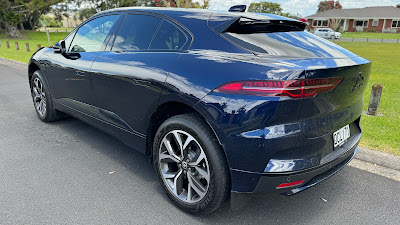I know it seems ironic but my favourite tech gadgets are the ones you don't notice. I've often written about how much I dislike unnecessary flashing lights, long-winded audio notifications and crazy, out-there designs that don't fit in with anybody's existing decor.
I'm into devices that just get on with the job without shouting, "Look at me! Look at me!"
Some people feel the need to "flex" - to show off they're using the latest tech and that's fine. It's just not me.
Case in point; should your audio setup be visible in your online video feed or not?
Obviously, the main priority should be the best sound quality possible but are you the kind of person who's happy to wear a gaming headset on camera?
Or if you've spent all that money on a quality USB mic, why not position it in shot to show it off?
That's not my style. Call me old-fashioned but I still prefer to create the illusion you're hearing me as if by magic... well, I like to keep my mic out of shot, anyway.
So how can you do that, yet still sound great?
Elgato has a simple, elegant answer; by combining the Wave:3 microphone with the Wave Mic Arm LP, most users should be able to position this fabulous streaming mic right in front of them, without it drawing focus on camera.
First up, let's talk about how great the Wave:3 is. Available in black or white, the Wave:3 is sturdily constructed and includes a weighted desktop stand in the box, as well as an adapter so you can attach it to other, non-Elgato booms, brackets and stands if you need to.
In keeping with the general simplicity of design that immediately had me so impressed, from the moment I plugged the Wave:3 in via its extremely generous 250cm USB-C cable I was blown away by the sound quality. My voice sounded clear and natural, right from the get-go. This must be thanks to the input from the respected Austrian sound engineers at LEWITT Audio.
I work at a successful radio station with "real" studios equipped with very expensive, professional microphones and for the first time I feel comfortable suggesting I could record my podcasts at home using the Elgato Wave:3 and I don't think many people would notice the difference.
There's a headphone jack on the back for lag-free monitoring and the controls are simple and easily accessible; the turn and push knob at the base of the mic lets you adjust mic level, monitor level or the mix between mic and computer audio. These levels are shown by a clear (but still subtle) row of white LEDs.
There's a capacitive Mute button on the top of the mic and the volume knob changes from white to red when this is activated.
While it sports a robust steel outer grille, there's a rather ingenious multi-layerd noise shield built into the Wave:3 to keep those pesky, poppy "Ps" and "Ts" under control. And if you happen to be a particularly poppy, close-talker, Elgato also sells an optional pop filter for extra protection.
Then there are the software enhancements available through Elgato's Wave Link desktop app. Yet again, this is a perfect example of simple-yet-effective design. With Wave Link, you can add multiple sound sources and mix them accordingly. There are more than 20 pre-loaded effects (reverb, delay, various EQs etc.) you can assign to the Wave:3 and you can download more. But perhaps the most cunning audio enhancement is Elgato's proprietary Clipguard - a brilliant piece of processing that instantly adjusts levels in real time if you get too excited so your audio doesn't distort or peak out. Genius.
So we have a truly great mic - that's half the equation. The Wave Mic Arm LP is the other half.
On the face of it, there's nothing too complicated about a mic boom like this but once more we find the elegance in Elgato's design - everything we need and nothing we don't.
The all-metal construction, in white or black, is extremely reassuring. Every clamp and joint that adjusts or tightens does it totally securely, meaning you can rely on the mic to be in the right position every time you use it. The ball head allows you to set your mic up at all angles and there are adapters in the box so you can use this boom with any other mic.
I love the Wav Mic Arm LP for all sorts of reasons but the magnetic covers over the cable channels literally made me say, "Wow. That is so cool."
The elbow joint in the middle of the boom offers 360° rotation and although the mic half of the boom sits above the other half, it can be adjusted both up and down to your preference.
As I've made clear, my preference is to position the Wave:3 just low enough to be completely out of shot - although to be sure, this a a mic setup definitely worthy of its own close-up. It look great - especially in the white option I've been sent to try. Best of all, I can easily swing everything out of the way, off to the side when I'm not using it. See? The perfect device; so fun to use when required, so easy to ignore when it's not.



















.jpg)
.jpg)
.jpg)
.JPG)
.jpg)
.jpg)
.jpg)
.jpg)
.jpg)
.jpg)
.jpg)
.jpg)
.jpg)
.jpg)
.jpg)
.jpg)
.jpg)